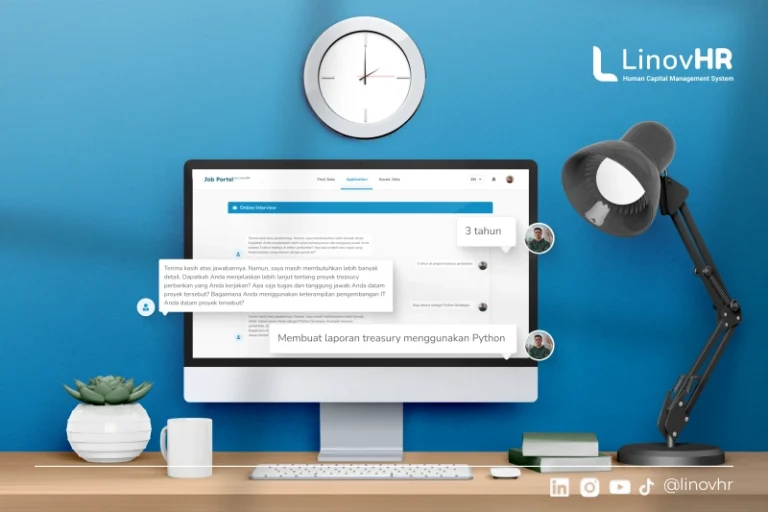In every company, there will always be underperforming employees who struggle to meet expectations. While underperforming employees can negatively affect productivity and morale, it doesn’t necessarily signal failure.
When managed correctly, underperforming employees can become an opportunity for growth both for the employee and the company.
Understanding why underperforming employees happens and how to respond effectively is essential for HR professionals, business owners, and leaders who aim to build a high performing workforce.
In this article, you’ll explore what underperforming employees are, the common causes behind their performance issues, and actionable strategies to help employees get back on track for turning potential setbacks into long-term success.
What Is Underperforming Employees and Why Does It Matters?
An underperforming employee is someone whose work consistently falls short of the required standards, goals, or behavioral expectations set by the company. This might include missed deadlines, declining work quality, lack of initiative, or poor collaboration within the team.
Underperforming employees doesn’t always come from laziness or lack of capability. Often, it reflects deeper issues such as unclear expectations, limited support, or a mismatch between an employee’s strengths and their assigned role.
Addressing underperforming employees matters because it impacts more than just individual output. It can affect team morale, productivity, and even customer satisfaction.
When left unmanaged, underperforming employees can spread creating frustration, resentment, and disengagement among top performers.
By tackling underperforming employees early with empathy, structure, and data driven insight, HR leaders can help employees rediscover their motivation and contribute effectively to company goals.
The key is to view underperforming employees not as a threat, but as a chance to guide employees toward improvement and alignment.
Identifying the Root Causes of Underperforming Employees
Before applying any corrective measures, HR managers must identify the true source of underperforming employees. Understanding the root causes allows companies to design effective interventions rather than short-term fixes.
1. Lack of Role Clarity
Employees who are unsure about their responsibilities or success metrics often fail to perform at their best. Without clear direction, even skilled employees may feel lost, leading to confusion, inefficiency, and reduced motivation. Such uncertainty can easily turn them into underperforming employees.
2. Insufficient Skills or Training
Sometimes, underperforming employees simply lack the technical or soft skills needed for their roles. This doesn’t mean they can’t succeed and it means they need guidance. Providing upskilling programs or coaching can bridge the performance gap.
3. Low Engagement or Motivation
Disengaged or underperforming employees tend to deliver subpar results. When individuals feel undervalued or disconnected from company goals, their enthusiasm declines. Recognizing effort, encouraging feedback, and aligning work with personal growth can restore motivation.
4. Ineffective Leadership or Communication
Managers play a key role in preventing underperforming employees. Poor communication, unclear feedback, or inconsistent expectations can create barriers to success. Employees thrive when leaders provide clarity, consistency, and constructive feedback.
5. Environmental or Personal Factors
Workplace stress, health issues, or personal challenges can lead to underperforming employees. Showing empathy and offering flexible solutions such as workload adjustments or mental health support can make a significant difference.
Practical Tips to Manage Underperforming Employees
Managing underperforming employees requires both strategy and empathy. The goal is not punishment, but to guide the employee toward improvement through structured, transparent actions.
1. Initiate and Honest and Supportive Conversation
Start by discussing underperforming employees issues privately and respectfully. Focus on specific behaviors or outcomes, not personal traits. Ask open ended questions to understand what might be affecting their work and listen actively.
2. Set Clear and Measurable Goals
Ambiguity leads to confusion. Use SMART (Specific, Measurable, Achievable, Relevant, Time-bound) goals to clarify expectations. This gives underperforming employees a tangible framework to track progress and regain confidence.
3. Develop a Performance Improvement Plan (PIP)
A structured performance improvement plan helps underperforming employees focus on measurable objectives. It outlines performance issues, clear objectives, and a timeline for review. It provides accountability for both parties and helps HR track measurable progress over time.
4. Provide Targeted Training and Mentorship
Offer learning opportunities such as workshops, coaching sessions, or mentorship. Continuous development not only enhances skills but also signals that the company is invested in the employee’s success.
5. Monitor Progress and Give Feedback Regularly
Consistent feedback sessions keep employees aligned and motivated. Recognize improvements, however small, and discuss remaining challenges constructively. Feedback should be timely, balanced, and actionable.
6. Recognize and Reward Improvements
Positive reinforcement boosts morale and encourages consistent performance. Celebrating achievements publicly when appropriate helps employees feel valued and appreciated for their efforts.
7. Reevaluate Role Fit If Necessary
In some cases, underperforming employees occurs because the employee’s strengths don’t align with their role. Consider lateral moves or alternative responsibilities that better match their abilities and interests.
Building a Culture That Prevents Underperforming Employees
Preventing underperforming employees is easier and more cost effective than fixing it. A strong company culture can minimize risks and foster a consistently high-performing team.
1. Clarity Expectations from the Start
Ensure that every employee understands their goals, responsibilities, and success metrics from day one. Job descriptions, onboarding sessions, and regular check-ins help maintain alignment.
2. Encourage Open and Transparent Communication
Foster a work environment where employees feel comfortable sharing challenges early, Two-way communication builds trust and allows HR to provide timely support before performance issues escalate.
3. Prioritize Continuous Learning
Support professional development through ongoing training and upskilling initiatives. When employees see that growth is valued, they are more motivated to perform and innovate.
4. Foster Employee Engagement and Recognition
Recognized employees are engaged employees. Implement fair reward systems and acknowledge efforts consistently to strengthen loyalty and performance across teams.
5. Empower Leaders to Lead Effectively
Equip managers with leadership and coaching skills. Effective leaders not only guide performance but also create an environment where employees feel supported and accountable.
Empower Employee Performance with LinovHR
Effectively managing underperforming employees requires structure, consistency, and real-time insight is something manual processes can’t always deliver.
LinovHR’s Performance Management System can set clear KPI’s, track employee progress, and implement improvement plans with precision. The system’s integrated features with 360 degree feedback, goal tracking, and automated performance analytics.
By combining empathy with technology, companies can nurture a culture of accountability, engagement, and continuous improvement.
Request a free demo of LinovHR today and discover how advanced performance management tools can help your company turn challenges into opportunities for long-term success.







